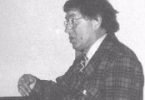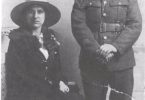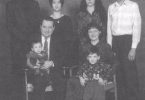Our parents were of Scottish descent. Dad, Alexander MacLaren, was born in Lochearnhead, Scotland, a direct descendent, on his father’s side, of the famous Rob Roy. In 1912, along with his parents, brother and sister, he immigrated to Canada. The family, except for my father, Alexander, who worked in Nordegg and later Wayne, Alberta, settled on a farm five miles south of Rocky Mountain House.
Mother, Frances Laura Henderson, was born in Wentworth, Nova Scotia, one of thirteen children born to immigrants from Scotland. In 1916, she and her dad set out for Alberta to establish a new home for the family. Grandfather went on to Wayne, Alberta, and Mother stayed in Calgary.
She met her husband-to-be, Alexander MacLaren, in Wayne, and following their courtship, they were married on Christmas Eve, 1923. They set up home in Wayne and their first son, Alexander William Wood MacLaren, was born on November 19, 1924. I arrived eighteen months after Alex and was named Cynthia LeEllen. Three and a half years later, a second son, Kenneth Duncan, made his appearance.
In the spring of 1930, the MacLaren family moved to Canmore. Dad was employed by the Canmore Mine Company as a stationary steam engineer and worked in the power house until his retirement at age seventy-three. Father died in the Canmore Hospital, February 14, 1964.
Mother lived in Canmore a total of fifty-five years. She was a homemaker who baked our bread, buns, cookies, cakes and pies, and in the summer and autumn, she canned fruits and vegetables. Her leisure time was spent crocheting, hooking rugs or visiting friends. Mom took us on long walks and picnics. She had a good sense of humour.
After the children left home, Mother worked with Miss Calender and Kathleen Yeats on the telephone switchboard.
After our father died, Mother continued to live in her home in Canmore for some fifteen years, spending many winters in Edmonton with her daughter’s family.
In 1980, Mother moved to the Senior Citizens Apartment in Canmore where she lived six years and then moved to Edmonton to live with her daughter. She was devoted to her five grandchildren and eight great-grandchildren. She enjoyed travelling and visited Winnipeg, New Jersey, Drumheller, Nova Scotia, Anchorage, St. Petersburg (Florida), Carvalis, Hawaii and Los Angeles.
Mother died on October 4, 1994 and her first great-granddaughter wrote the following poem,
No Return
As a child life was simple,
Ice cream was good.
Cheesecake wasn’t.
Boys had cooties,
Girls didn’t.
I loved to dance, and sing.
Santa came at Christmas
Bubbles were miracles from above
My parents were gods, and knew everything.
I didn’t know of the horrible things.
The horrible things that smack you in the face.
They knock you off your feet.
The things that bring you to the point of no return.
Where you cross the line into the world of unknown.
I crossed the line one beautiful sunny morning.
I don’t know what day it was, because I choose to forget.
Something was wrong when I woke up, as if the whole world
had suffered a loss.
My Aunt walked into the room pretending (and failing
miserably) as if everything was fine.
I have learned children are not as dumb as you may think.
The soft-spoken words, tender touches, and assurance did not
mask the truth.
A great woman was gone from the world.
A woman who had loved.
Someone who hadn’t done anything wrong.
The facts, the medical reasons, and knowing she had gone to
a better place
can’t heal the pain of realizing your great grandmother will
never be coming home.
The woman who had watched you grow, watched you
blossom.
The woman who refused to let you watch “City Slickers”
The friend who rode “It’s a small world” with you four times
in Disneyland.
The mentor who had lived ninety-four years.
Lastly the cook who had fed you porridge, knowing how
much you hated it.
That day made me cross the line.
I realized my parents were not as smart as I thought.
That it must be impossible for one guy to get
all the way around the world in one night.
That cooties may not be as bad as they seem.
I now know that bubbles are merely spheres of soap filled
with air.
The joy, and the magic is still there, but faded.
There is no return for me.
Sheila Kuny
Canmore was a multi-cultural, friendly village and supported a physician and a small hospital, located on the “town side”; one school and three churches – the Ralph Connor Memorial United Church, St. Michael’s Anglican Church and Sacred Heart Catholic Church.
The two doctors that I recall were Dr. Worthington and Dr. Gelfand. A new hospital was constructed on “Hospital Hill (or “mine side”) and it contained an operating theatre where minor and major surgery was performed.
One winter, an epidemic of scarlet fever developed and immunization was not provided in Canmore, so Dad drove us to a Banff clinic where we were immunized. We also went to Banff for any dental procedures that were required.
The Canmore school housed all grades and religions. Two rooms were allotted for grade nine to twelve/ thirteen; the lower level contained an area for “Home Economics” and “Shop”. The school principals I remember, were Mr. McLeod, Mr. Bailee and Mr. Gish. Mr. Bradstock was the principal when Ken was in high school. Other high school teachers were Miss Shepherd, Mr. LeBlanc, Miss Belken and Miss Bloom, who also taught music lessons and started a school choir, which I joined. One spring, we performed a recital held in the YMCA; Howard Mallabone, Archie Kaleta and I sang solos. We had arrived!!
Mr. Rene LeBlanc passed on his “love of drama” to his students. Every year, he produced a play that was presented in the Union Hall.
When King George the Fifth died, the students in the classroom where Alex was, were assigned the task of composing a poem about the King. School Poems – We have pleasure in printing three little poems by school boys which express their sorrow at the death of King George.
The King
The bells of London loud do ring,
In honour of our gracious King;
Loved and was loved by all he ruled,
Even the youngest in the schools.
Alex MacLaren
The King
I loved our noble monarch,
He was so tried and true,
He loved his noble Empire,
And loved his people, too.
Angelo Maschio
The King
Dead is England’s greatest King,
Hear the bells in tolling ring;
England’s waves in sorrow moan,
A nobler King ne’er graced the throne.
Neil Broderick
King George the Sixth and Queen Elizabeth’s coronation was in 1937. A float, depicting the event, was entered in the Canmore parade: Mavis Mallabone was the Queen, Alex MacLaren, the King, Lou Fowers, Princess Margaret, Eva Bailee Princess Elizabeth, Irene Towers and I were the “ladies-in-waiting”.
The village had a volunteer fire department. Early one morning, the fire siren sounded and, through the window, I saw Eli Padetz running to his car. Eli was wearing his fireman’s cap, jacket and boots and long underwear! I hollered, “Eli, go back and put your pants on!” (For several years, Mr. Padetz played Santa Claus at the Christmas Eve concert held at the Union Hall).
Our home was on Main Street on the “town side”.
In the house next to our residence lived the Catholic priest and across the lane, resided three Sisters of St. Martha, who became our friends. I can remember one Christmas Eve when the Sister who played the church organ became ill. I substituted for her and, during the service, an organ pedal broke, the music stopped, and the people in the loft stared at me. What an embarrassing situation to be in!
The first family that I recall living in the home next to ours were Mary and Alphonse Rodda and their two daughters, Corrinne and Lorraine. Years later, when the Roddas moved to their residence in the Canmore Hotel, Mary and Eli Padetz and their two daughters, June and Marlene, became our neighbours. We were very fortunate that we had such wonderful neighbours with whom we established “lasting friendships”.
Dad worked during the Great Depression so it didn’t affect us as it did some families in Canmore and our relatives in Wayne, where the mine had closed.
I can recall men who were “riding the rails” or hitch-hiking rides west in search of work, coming to our house and asking for food. Mother would provide them with a lunch, served outside on the porch, and a lunch and beverage “to go”. The Depression was a dignity robber and created a dismal time for many Canadians.
Health insurance was unknown and when an individual required hospitalization, in Calgary, it was very expensive and created hardships for many families. On two different occasions, I recollect Mother rushing to Calgary to ensure her niece/nephew could be admitted to the Holy Cross Hospital. A person could not be admitted to that hospital until a down payment was received.
Canmore was a tremendously adventurous location to grow up in. As children, we: -played many games such as marbles, ball, road hockey, run-sheep-run, jacks, and snakes and ladders; – skated at the rink and the pond “back of Canmore” ;
– enjoyed July 1st activities;
– went to Banff for family picnics in the park or to swim at the Cave and Basin and Upper Hot Springs. After our swim, Dad would buy us a hamburger that cost 25 cents each!;
– hiked and explored in the mountains;
– attended Sunday School;
– borrowed books from the library in the YMCA;
– went to school picnics;
– went to Saturday matinees, fifteen cents each;
– and flew kites that had taken hours and hours to make. We were devastated when the kites sometimes would fall and break on the first flight.
Alex and I took piano lessons from Mrs. Dube and Martha Fowers. Kenneth had violin lessons from Mr. Strauss.
Christmas was a special, magical time for children – every Christmas Eve, a concert was held in the Union Hall. Entertainment was provided by the school pupils and Santa Claus never failed to arrive with a gift, from the Canmore Mine Company, for every child in the village.
The “Company Store” and C.T. Sing (which is now Marra’s family grocery) provided their customers with a free Christmas turkey. I also recall decorative jars of candied ginger and fire crackers my father received from the Oriental men who worked at the mine.
Ralph Connor United Church Sunday School and Bible Class students provided a Christmas and Easter concert in the church, during which plays, recitations and songs were presented. Many hours were spent in preparation for these events.
Halloween was a time for masquerading, treats and tricks. Some of the high school boys would go to the “Prospect” area, on the “mine side”, and knock over the outhouses; then the next day, they would go and put them back in place. One Halloween, a wagon was hoisted up onto the roof of the school!
Easter holidays were often spent visiting our grandparents in Wayne. Summer holidays were enjoyed on the farm at Rocky Mountain House. Alex and I liked to go running, barefoot, through the meadows and fields. It was “torture-time” when September arrived and we had to wear shoes to school.
When we were teenagers, church and religious activities played a large role in our lives. Alex and I attended weekly Bible class lessons, taught by Mrs. Mitchell, and we attended church on Sunday evening. I can remember the fun we had at the United Church and Anglican Church Young Peoples’ organizations.
We also:
– were involved in the high school’s drama presentations;
– went dancing at the Union Hall and at the Banff Legion;
– enjoyed July 1st activities and fireworks;
– rented horses for $1.00 a day and went riding in the hills. Later, when Alex had a summer job, he purchased his own horse;
– played softball;
– climbed Lady MacDonald, led by one of the Dewis boys home on leave from the Air Force;
– went hiking in all seasons in the mountains;
– went skiing on the “Backward L” and on the hill behind the graveyard. There were NO ski lifts;
it took me hours to climb to the top of the L and thirty to forty-five minutes to ski down the run. For ski equipment I had Alex’s old high boots, wooden skis and poles, aviator’s cap with earflaps. I did have my own wine coloured melton cloth ski suit, though!
– went on long bike rides. There were two “men’s” bikes at our house – one belonged to Dad, we couldn’t use it; the other was Alex’s who generously let Kenneth and me borrow it when he was not using it!;
– swam in the Bow River and in the old “Cochrane Mine”. Each spring I remember a race to see who could be first to dive into the icy water. The bravest of boys jumped off the Bow River bridge;
– skated on the Bow River, in the moonlight, and had bonfires in which we roasted potatoes. We also skated at the rink and attended hockey games;
– entered sporting events against the Banff school students. There was great rivalry between the schools!;
– walked through the Park to Banff with Mavis Mallabone and Norman Witham;
– played tennis on the court next to the YMCA. I always thought Bill Jones and Unildo Trono were the best players.
Alex and I continued to take piano lessons from a Mr. Naylor; later on, I had lessons from Miss Bloom. I did not like practicing (Alex was the better pianist) and we hated piano exams which were usually held at the Banff Springs or Palliser Hotel in Calgary. The exams were played on a baby grand piano – the first time I saw one, I thought what kind of monster is that??
Kenneth took clarinet lessons from Emilio Cassale and later he and his friend, Bill Belenky, played in the band.
In the summer months, the boys, who were sixteen, worked at the mine on the “picking table” picking rocks out of the coal.
Several of my friends worked at the Banff Springs Hotel and at fifteen years of age, I persuaded my parents to let me go and work in the laundry. We lived in the Staff Quarters and after the first day’s work was finished, I was contemplating calling my parents to come and take me home; however, just at that moment, they arrived to do just that! I imagine they did not think I would stay! Being of a very determined nature, I said I was fine and worked until the end of the summer holidays. The three following summers were spent at the Banff Springs Hospital in the role of an “office girl”.
In the fall of 1939, “carefree days of childhood” disappeared from our lives forever and were replaced by apprehension – the Second World War had begun. In 1943, Alex joined the army; he trained in Hamilton, Ontario, and was then loaned to the American Forces to teach skiing and mountain survival to their troops in the mountains surrounding Jasper. Later Alex went overseas with the Lake Superior Regiment and was stationed in Holland.
In those days of strife and sorrow, a sad message reached many a family and so it was on Easter weekend in 1945 that it crossed our threshold. Alex had been killed in the Hochwald Forest in Germany on March 1, 1945. Alex was twenty year old at that time – he would have been twenty-one in November, 1945.
Alex is buried in Nijmegen Canadian Military Cemetery, Grave 6, Row 4, Plot 14, four miles south-east of Nijmegen, Holland, a recognized military burial ground that will receive care and maintenance in perpetuity. The grave of every Allied soldier who fell in Holland or Germany – among them an estimated 37,000 Canadians, was adopted by a Dutch family to be cared for as though it were that of brother or son. The Dutch families have accepted the responsibility of visiting the graves regularly, seeing that fresh flowers are kept on them and attending ceremonies of commemoration.
Kenneth completed grade twelve at Mount Royal College in Calgary. He then travelled east to Toronto, Ontario, and attended the Royal Radio College of Canada where he graduated as an electronic technician. His work took him to many locations, among them the DEW Line (Distant Early Warning Systems) at Cape Dyer and Baffin Island on the east coast; New Jersey, Germany, Maryland,Arizona and lastly,Anchorage, Alaska.
In June 1963, Kenneth married Joan Randle of Winnipeg, Manitoba. They were blessed with one son, Dr. Duncan Charles MacLaren, who is presently deeply involved with Genetic Research at the University of California, Los Angeles.
Kenneth and Joan retired to Reno, Nevada; their home is a half-hour drive from Lake Tahoe.
Kenneth is happy tending to his rose garden and fruit trees, and travelling.
I graduated as a registered nurse from the Holy Cross Hospital in Calgary and then worked in the emergency room for one year. I was awarded a Government bursary to study Public Health Nursing at McGill University, Montreal, Quebec.
On December 20, 1952, I married John Adams Hanna, of Edmonton. We were blessed with four wonderful children – three daughters, LeEllen, Leslie and Cindy, and one son, John William Alexander Hanna. Lee and Les graduated as registered nurses, Cindy as an accountant and Bill as an electrician.
We lived in Edmonton/Calgary/Edmonton. Christmas, New Year ‘s, Easter holidays and long weekends were spent visiting my parents in Canmore. My husband, children and their friends, enjoyed the community as much as my brothers and I had.
In 1993, I retired from Alberta Health and after much thought, in 1997, I decided to relocate to Canmore. Although the village has grown into a town and changed immensely, it is wonderful to be back “home”. The enormous pleasure of opening the window coverings in the morning and viewing the majestic mountains fills my heart with joy!
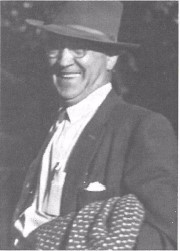
Alexander MacLaren
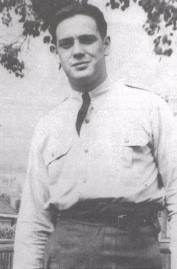
Alex MacLaren
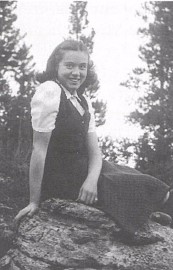
Cynthia MacLaren
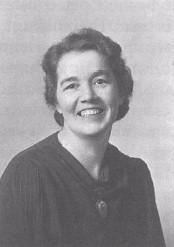
Frances MacLaren
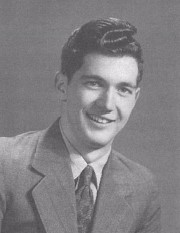
Kenneth MacLaren
In Canmore Seniors at the Summit, ed. Canmore Seniors Association, 2000, p.170-174.


